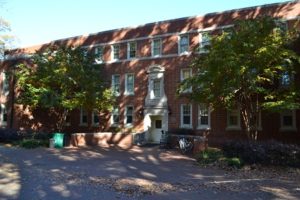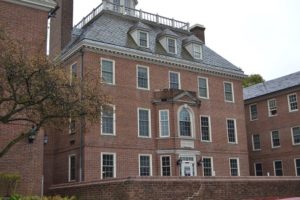At the beginning of the college search process, students often start with a misguided assumption. The idea that Ivy League schools are the best starting point in their college career is a common misconception. Some current statistics we have gathered will shine a light on another possible option that students often disregard when making their initial undergraduate college choices: private liberal arts schools.
In fact, what follows will show that liberal arts colleges offer the best educational opportunity to select students willing to put in hard work. By simply looking at the root purpose of a liberal arts education and the desirable attributes and outcomes it provides, we can see that this is a good reason to choose a liberal arts college. Yet many students (and their parents, teachers, etc.) remain unconvinced. We have some statistics and analysis that will clear up any misconceptions and bring out pertinent facts that help add depth to the choices facing students aspiring to attend an elite educational institution.
National Science Foundation Analysis
To begin with, we take a close look at the numbers concerning the schools from which the students, that successfully completed a science oriented doctoral degree program, originally began their collegiate careers. The National Science Foundation completed an in depth analysis of the facts surrounding these schools most responsible for producing the students who go on to successfully complete a science PhD.
Although there are indeed more of them, all undergraduate schools still awarded a smaller proportion of the total number of U.S. bachelor’s degrees than the 108 research universities with very high research activity in 2010. The result, and key point, is that the pool of potential doctoral recipients coming from liberal arts colleges is smaller; there simply aren’t as many students at these liberal arts schools as there are at the major research universities, such as Harvard and MIT.
Now, in order to compensate for this discrepancy, the National Science Foundation looked at “institutional yield ratios,” where they considered the importance of undergraduate colleges to the development of potential science and engineering PhD’s by looking at the percentages of students receiving doctorate degrees from each school, rather than the biased simple headcount.
According to the NSF website, “the institutional-yield ratio is the number of S&E doctorate recipients per 100 bachelor’s degrees awarded in all fields 9 years earlier.”
The NSF found that when looking at institutional rankings in this way, some important statistics are revealed. In fact, nine of the top 20 institutions of 2002–11 S&E doctorate recipients are liberal arts colleges; ten are research universities with very high research activity, and only four are Ivy League institutions.
The fact that nearly half of the top 20 schools in terms of producing eventual PhD’s are liberal arts schools should jump right of the page for somebody seriously considering an Ivy League school. Developing the statistics further, in terms of producing U.S. S&E doctorate recipients, 27 of the top 50 U.S. baccalaureate-origin institutions (as ranked by the institutional-yield ratio) are traditional undergraduate colleges; 21 are research universities with very high research activity. So, going by the numbers, we can see that a liberal arts school education is the unseen factor in successful, post-graduate education. This research by the NSF shows that when one compensates for the smaller size of the pool of potential doctoral recipients at liberal arts colleges, more students who successfully achieved an advanced science degree started out with a liberal arts education.
In The Classroom
To some, these statistics are startling and reveal exactly the opposite of what one would expect; after-all, what do the humanities and a bohemian style education have to do with science? Answer: Everything.
Critical thinking is crucial to science and the development of scientific theory, and critical thinking is exactly what liberal arts colleges strive to develop. Generally, liberal arts colleges will feature certain common attributes that contribute to the overall goal of a ‘well rounded’ student; one who is capable of critical thinking across a variety of subjects. This means that a liberal arts student will have a diverse academic background featuring coursework in philosophy, history, English, math, and science; perhaps these basics will strike a hidden interest in drama, existentialism, abnormal psychology, gender studies, or political science. The idea here is to broaden a student’s horizons, as opposed to specializing in one particular field, perhaps too early in the educational process. A liberal arts school strives to avoid the common pitfalls of a large university, such as early specialization. This is an aspect of education that large research universities can miss, especially at the undergraduate level.
Small Class Size
Imagine trying to present a ground-breaking academic paper and not being capable of public speaking. The well rounded liberal arts student will be able to communicate his or her ideas effectively, both orally and on paper. One of the most advertised attributes of a liberal arts college, small class size, is a major contributing factor to this kind of development. A small number of students in an intimate classroom setting allows students to interact with one another and learn to develop ideas in a group atmosphere. In addition to this, students are in close contact with professors. Students are able to ask questions and interact with professors on a daily basis, even outside the classroom, often leading to close relationships with their mentors.
Small class size and a close relationship with professors, as well as other students, are especially beneficial attributes in terms of the labs that science students, in particular, will take. Thomas Cech, a professor at Grinnell College and author of the paper “Science at Liberal Arts Colleges: A Better Education?” makes the important point that “Many liberal arts colleges integrate more open-ended, less predictable laboratory projects even in introductory courses, making them more like mini research experiences.” This is something that isn’t offered often at the undergraduate level, especially if you choose to attend a large research university with intro science classes of hundreds of students. The importance of the opportunity to do genuine research early on at the undergraduate level cannot be overstated. It not only allows for hands-on experience at a young age, but also gives invaluable points on a resume that can contribute to more research opportunities later on in the college career, and beyond.
Outside The Classroom
Liberal arts colleges pride themselves on educating the ‘whole’ student. This means that not only do students have a broad academic background, but that they will have participated in experiences outside the classroom that students at an Ivy League institution may miss. Study abroad programs, independent study opportunities, and leadership training programs are just some of the ways that various liberal arts colleges separate themselves. Schools such as Whittier, with the LEAP opportunity, and Smith, where almost half of students will study abroad, are examples, and there are many, many others. Often, these are central features of colleges that more than ‘just a few’ students take part in; they are the backbone of the college experience. These schools distinguish themselves from the Ivies by offering more than specific study in one particular area.
The collaborative focus on quality scholarship found at liberal arts colleges is what separates them from other undergraduate opportunities, including Ivy League schools. Studying in close proximity to ‘first tier’ professors early on in a collegiate career encourages just this sort of scholarship, and small class sizes facilitate this focus. The ‘outside’ experiences offered at liberal arts institutions, such as study abroad programs and leadership training opportunities further develop a student seeking a post graduate option such as a science PhD. A student capable of an Ivy League education needs to be aware of their options at the undergraduate level; as the number one ‘unseen factor’ in developing science PhD’s, backed by statistics and hard to ignore, a liberal arts education is definitely one to look into.



